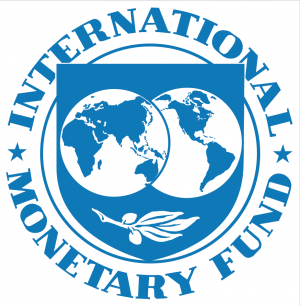Stop bailing out reckless lenders
I denne teksten skriver Tim Jones fra Jubilee Debt Campaign UK om sammenhengen mellom lån fra IMF og uansvarlige långivere, såkalt "moral hazard". For hvem blir egentlig reddet av IMFs kriselån?
In April, four years of International Monetary Fund loans to Ghana came to and end. Such loan programmes are usually called a bailout, but who were the IMF loans bailing out? Not the people of Ghana, but previous lenders to the country, often on loans given at high interest rates.
Over the four years of IMF loans the Fund lent almost $1 billion, with a further $0.75 billion from the World Bank. These loans were effectively used to meet the interest payments on Ghana’s external government debt to private creditors, which were $1.7 billion over the same time period.
Ghana’s debt crisis began after prices for two of its key commodity exports – gold and oil – fell. Rather than private speculators, who had lent at interest rates of 8%-12%, sharing in the cost of this economic shock, the IMF bailout loans ensured they continued to be paid. Meanwhile, public spending in Ghana was cut by 17% at the start of the IMF programme.
Moral hazard
The standard international response to government debt crises is for the IMF and other institutions to lend more to the country, while insisting on public spending cuts and tax rises. This is bad for the country as all the costs are imposed on the local population, and it is often self-defeating with austerity holding back the economy and leaving the country in a debt crisis.
It also incentivises lenders to act recklessly. If they think it is likely the IMF will bail them out, lenders do not need to take risk into account when they give their loans, and check whether the loans will be spent well before they agree them. This is the economic concept of moral hazard – if lenders get bailed out, they will continue to act recklessly.
In theory the IMF is not meant to lend into unsustainable debt situations without requiring a debt restructuring. But in reality it does not define what an unsustainable debt is, meaning it often lends into very high debt situations without any debt restructuring taking place.
Debt restructuring is a key to success
A recent IMF review found that in 33 IMF loan programmes in countries with high debt vulnerabilities, in only 40% of them was any kind of debt reprofiling or restructuring carried out. However, in high debt countries where there was a restructuring as part of the IMF programme, 45% were successful, 40% partially successful and 15% unsuccessful. In contrast, in programmes in high debt countries without a restructuring, just 5% were successful, 45% partially successful and 50% unsuccessful.
In high debt cases where restructurings are not part of an IMF programme, the IMF attempts to make the numbers add up by requiring more austerity. Greater “fiscal adjustment” – spending cuts and tax increases – is used as a way to try to make the debt sustainable. Peter Doyle, a former senior IMF economist has criticised “the lengths to which the IMF will go to avoid debt write-offs necessary and sufficient to secure macro sustainability”. This means the IMF, writes Doyle, has been captured by creditors, turning it into “brute bailiff-cum-debt-collector”.

IMF needs to ensure debt sustainability in its programmes.
Case example: Chad
Moreover, even where the IMF does require previous lenders to restructure the debt, the bare minimum is done to make the debt “sustainable”. For example, in 2018, as part of its IMF programme, Chad completed a debt restructuring with commodity trader Glencore, which increased the maturities on the debt and lowered interest rates. However, following the restructuring, the IMF still rates Chad as at high risk of debt distress.
Under the new debt payment schedule, Chad’s external debt service was projected by the IMF to stay on the IMF’s threshold of 18% of government revenue until 2025. In effect, the debt restructuring was designed to provide the minimum debt relief necessary to allow the IMF to say Chad’s debts are sustainable. However, one economic shock could quickly lead to another default, with debt payments rising over 25% of government revenue.
Necessary steps
The IMF is currently reviewing important policies on debt. During these reviews it should:
1) Set clear guidelines on what constitutes an unsustainable debt.
2) Commit to only lending to governments with unsustainable debts if there is a debt restructuring during the programme, or if a government defaults.
3) Debt restructurings should only be considered as having done enough if they reduce a country’s debt risk rating to at least moderate.
Introducing these policies would increase the pressure on lenders to accept necessary debt restructurings, freeing up money to finance development, mean lenders act more responsibly in future, and protect public funds from needing to give debt relief.
